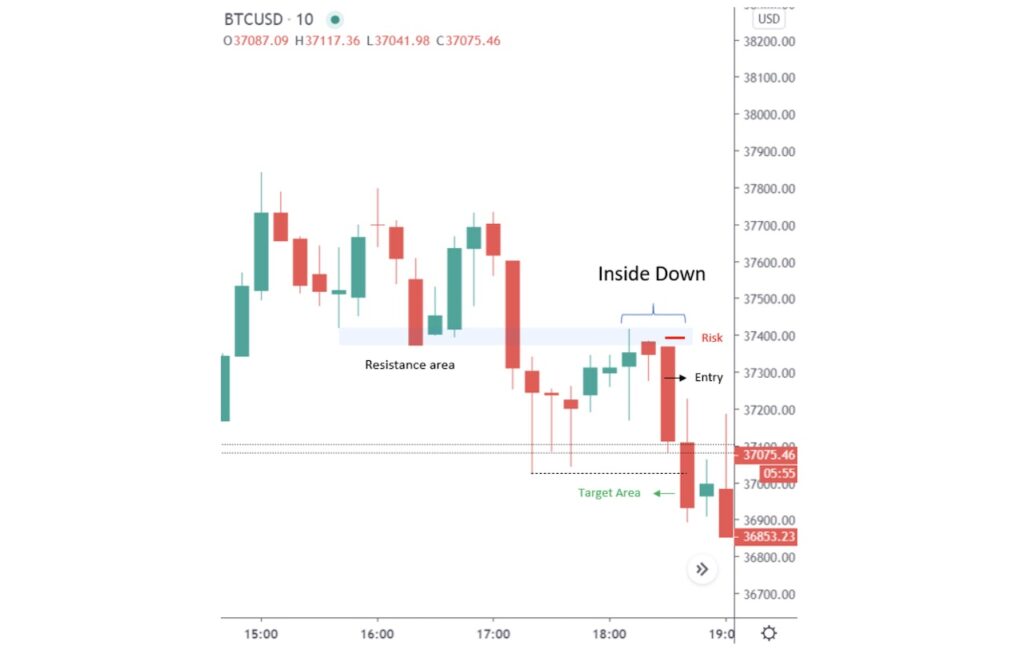When it comes to price fluctuations, the phrase “price action” refers to the characteristics of the price variations of an item. This movement is often compared to previous price fluctuations to determine its significance. By using price action trading, traders can read the market rather than depending simply on technical indicators. They may make subjective trading choices based on the historical and present price movements.
As a result of the fact that it disregards basic study in favor of concentrating only on current and past price movement, the price action trading approach is heavily dependent on technical analysis software.
Information on the instruments used in price action trading, courtesy of the world’s most prestigious price action trading school.
Using historical data and prior price movements, price action trading takes into account a variety of technical analysis tools, including but not limited to charts, trends, price bands, elevated / low swings, technical levels.
Trading choices may be made using a variety of different tools including basic price bars and price bands, break outs and trend lines and more combinations like candlestick or volatility.
-
Contents
When Do Price Action Traders Make Use of Their Skillset?
Because price action trading is a means of anticipating and speculating, it is used by a wide range of traders, including retail traders, speculators, arbitrageurs, and even trading firms that hire traders to make money. It may be used for a wide range of financial products, including stocks, bonds, currencies, commodities, and derivatives, among others.
-
Price Action Trading Course from Finlearn Academy: A Step-by-Step Guide
According to the best price action trading course, when it comes to trading price action, the vast majority of professional traders use a range of tactics for spotting trading patterns as well as entry and exit points as well as stop-loss levels, and other relevant observations. In certain cases, having a single strategy that is focused on a single (or a few) stocks may not be adequate to generate enough trading opportunities. The vast majority of situations involve a two-step procedure:
Determine a scenario: for example, a stock entering a bull/bear phase, a channel range, or a breakout from a channel range
Identifying trading opportunities within the context of the scenario: Suppose a stock commences a bull run; is it more likely to (a) overshoot or (b) retrace its steps afterward? Traders’ perceptions of this option are entirely subjective, and they differ from one another even when the circumstances are the same.
-
The Course’s Popularity on the Internet
Prices are more appropriate for trading price movement in short- to medium-term constrained profit transactions than they are for long-term investments.
Traders believe that the market follows a random pattern and that there is no evident systematic approach that can be used to establish a consistently profitable strategy. Technical analysis and recent price history are used to discover trade opportunities that may be lucrative or unsuccessful dependent on the trader’s understanding of the facts in the price action trading market.
Trades based on self-defined strategies offer traders greater flexibility, apply to a wide range of asset classes, are simple to implement with any trading software, mobile application, or trading portal, and allow for the easy backtesting of any recognized approach using historical data to be conducted. Most importantly, traders have a sense of control since the approach allows them to pick their actions rather than merely following a set of predetermined instructions.
-
This course will instruct you on how to interpret price movement and what it means.
Technical analysts evaluate price behavior on charts in an attempt to uncover patterns or indicators that may assist in anticipating how an asset will act in the future, as well as in determining the best times to enter and leave trading positions. Trend lines and oscillators are technical indicators that are created by market action and forecasted forward to provide traders with recommendations.
Naturally: Are there any drawbacks to using price action trading strategies?
Price movement is often a matter of interpretation, and traders may interpret the same chart or price history in several ways, resulting in a range of different results. Furthermore, market action in the past does not always serve as a trustworthy predictor of future outcomes. As a result, technical traders should use a range of techniques to verify their signals and be prepared to exit deals quickly if their projections prove to be incorrect.
-
The Final Result
There are a plethora of price action trading theories and strategies available, many of which claim to have a high percentage of success. Traders, on the other hand, should be wary of the survivorship bias that exists since only successful tales make the news. With the right strategy, trading has the potential to yield big gains. Every trader must completely grasp, test, pick and decide on what meets the requirements for the biggest prospective profit margins before acting on that decision.
If you want to learn about the ins and outs of price action trading, then get right guidance from the experts of Finlearn Academy. Join their course for the best training.





More Stories
5 Benefits of Manufacturing Analytics
Outsourcing HR Services: Understanding Compliance and Security Measures
Navigating the World of Computing: Understanding Different Computer Types